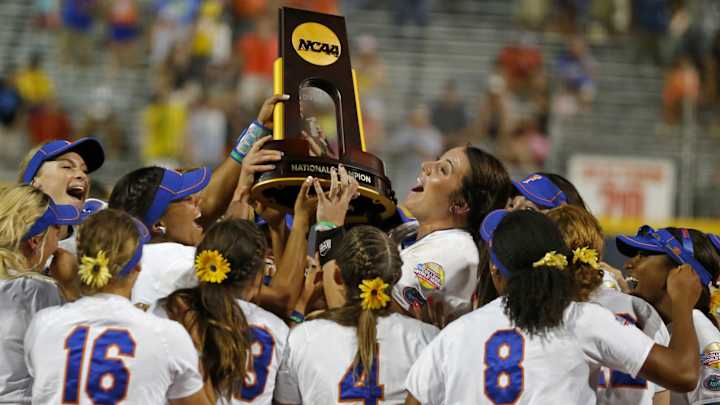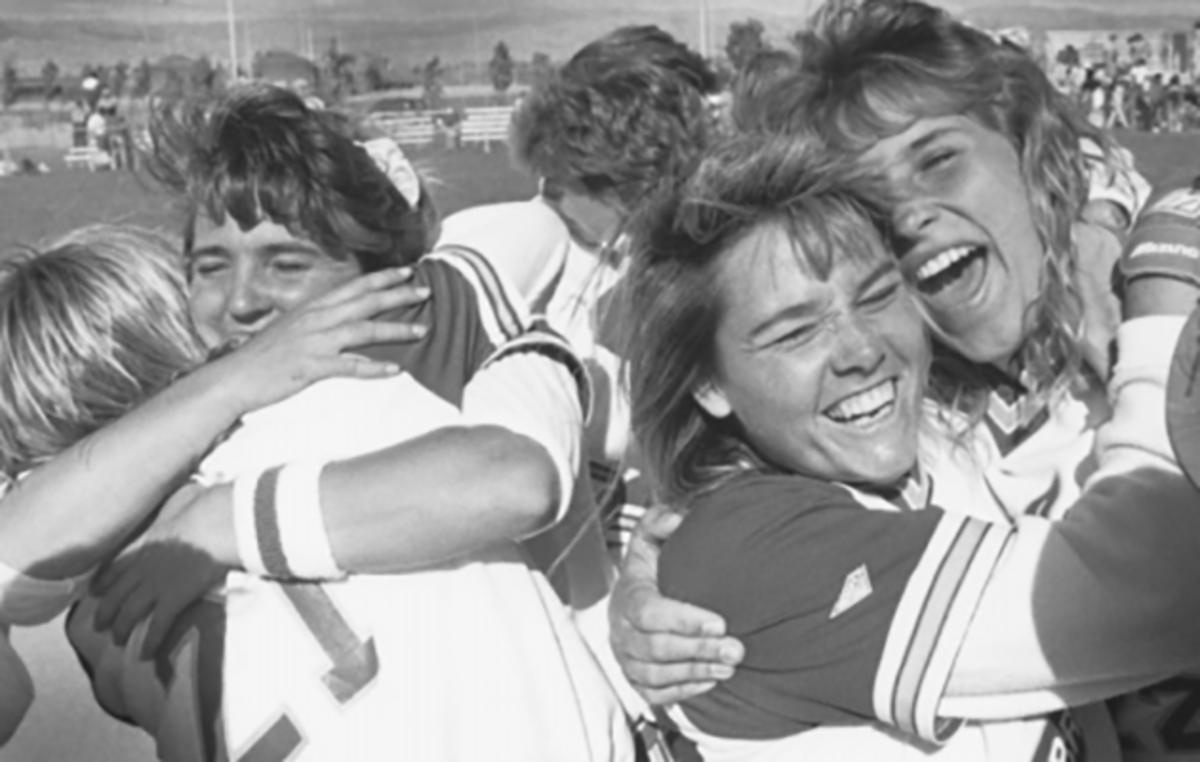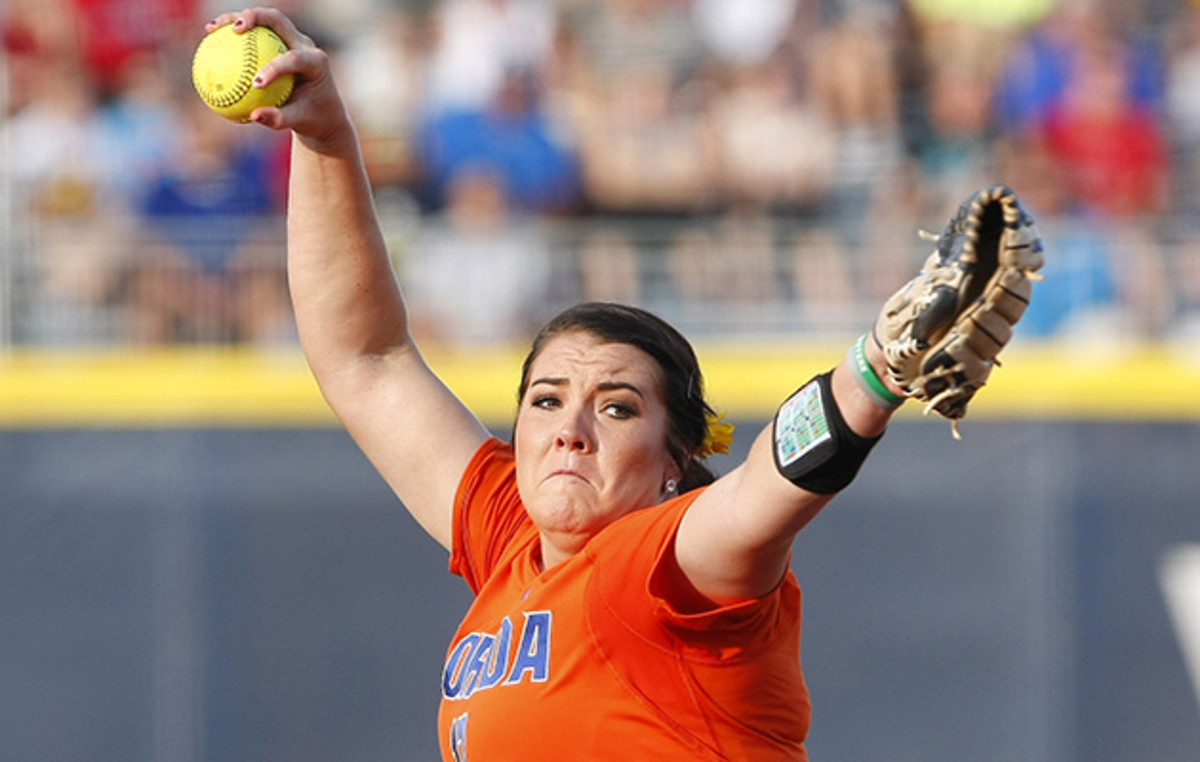Florida looks to tie UCLA’s record, win third straight national title in 2016

When the No. 1 Florida Gators take the field on Friday at 6:45 p.m. ET against Illinois State at the USF Wilson-DeMarini Tournament in Tampa, Fla., they will be beginning their attempt to become the second team to win three NCAA Division I softball national titles in a row.
While six other teams have attempted to three-peat, only the 1988–90 UCLA Bruins have succeeded.
As Florida chases history, SI.com caught up with some of UCLA's former players, who assessed Florida's chances and described the challenges the Gators will face this season.
• Undaunted by grim prognosis, softball star vows to return to the field
The quest for three
On the heels of a 60–7 season and its second NCAA title in as many years, Florida will attempt to tie UCLA's record this season. The Gators enter this year as a favorite to win another title, with No. 1 rankings in both the ESPN and USA Today preseason polls.
With seven World Series appearances in the past eight seasons, 11th-year Florida head coach Tim Walton says his team has one goal: “Our mission is to figure out a way to get our team back to the World Series.”
Florida will rely on eight starters and 14 letter winners from last year, as well as seven newcomers from a highly-touted 2015 recruiting class.
Leading the way for the Gators’ offense in 2016 will be first team All-America selection and SEC Player of the Year Kelsey Stewart, who is also a member of the U.S. national team. The senior is already the program’s all-time hits leader with 293, and she batted .435 from the top of the lineup last season. Florida also features senior Kirsti Merritt, an All-SEC selection in 2015, who hit .325 with nine home runs and 47 RBIs as a junior, as well as senior Taylore Fuller (56 RBIs in ’15) and sophomore Nicole DeWitt (.331 average in ’15). Freshman outfielder Amanda Lorenz is expected to start for the Gators, bringing her career .592 average with 39 homers and 126 RBIs from Moorpark High School in California.

In the circle, Florida will have sophomore Aleshia Ocasio, who went 18–3 with a 2.01 ERA in her rookie season, along with junior Delanie Gourley, who was 10–2 with a 2.13 ERA one year ago. But the team’s most formidable pitcher in 2016 may be freshman Kelly Barnhill, who threw 22 no-hitters in high school and became the second-youngest player ever to join the U.S. national team.
Florida's road to a third straight title won't be easy. The Gators face five Women’s College World Series teams and 13 other NCAA tournament teams from last season in its 52-game slate this year.
The team's toughest test could come as soon as Saturday, when Florida is set to face No. 2 Michigan. The Gators last faced the Wolverines in the decisive third game of the championship series at the 2015 Women’s College World Series.
• Romero sisters will make history on opposite sides in softball World Cup
How UCLA won three straight
From 1988 to 1990, UCLA played Fresno State in three consecutive national championships. During their unmatched run, the Bruins went a combined 163–19 and won three straight Pac-10 titles.
UCLA boasted a core of seven players on all three championship squads: Bea Chiaravanont, Michelle Montgomery, Shanna Flynn, Lisa Longaker, Kerry Dienelt, Erica Ziencina and Missy Phillips.
“That group in those three years, they were really impressive,” said Bruins coach Sue Enquist, who helped UCLA to six national titles in 18 seasons with the program. “I just always felt like we had such an edge because of how they set their minds and then allowed their bodies to take over in the games.”

Following their second repeat in program history in ’89, the ’90 Bruins became perhaps the best team in college softball history to that point. A staunch pitching staff featured four hurlers, who combined for 46 shutouts and a team ERA of 0.42. Led in the circle by three-time first team All-America selection Lisa Longaker (20–2, 0.40 ERA), UCLA cracked the 60-win mark for the first time, finishing the season with a 62–7 record.
“Especially during my senior year in 1990, we had so many people who would do what it takes to get the job done,” said Longaker, who was the Pac-10 Player of the Year in ’90. “We had four pitchers, which was highly unusual back in that day. We were so multifaceted on the mound.”
The Bruins had just two seniors on the ’90 squad in Longaker and Montgomery, but also possessed an impressive cast of supporting characters, led by first team All-America selections Lisa Fernandez (11–1, 0.25 ERA, .310 BA) and Yvonne Gutierrez (.384 BA, 28 RBIs). The three-peat team also featured six All-Region and nine All-Conference players, with Longaker, Flynn, Phillips and Dienelt serving as multiple-time honorees during the three-title stretch.

“Their overall play in that three-year window is among the top of our greatest teams,” Enquist said of a UCLA program that has totaled 12 national championships in its history. “They were, by far, the most consistent group. That laid the groundwork for their amazing story.”
Can Florida match UCLA?
Six teams in college softball history have repeated as champions. Only one, UCLA, has won a third consecutive title.
The Arizona Wildcats twice came close to capturing a third straight crown (’95 and ’98), but fell to UCLA and Fresno State in the deciding games of those respective seasons. In 2005, UCLA nearly achieved the feat a second time, but lost to Michigan in the tenth inning of the championship series’ winner-take-all game.
“Once you win and then repeat, you then become part of a very small community that understands how difficult it is to sustain it because there’s zero margin for error for the team trying to three-peat,” said Enquist.
• Cat Osterman retires from softball after storied playing career
Florida’s challenge is particularly daunting because of the number of players now competing in college softball. When the Bruins three-peated, there were just 171 teams and fewer than 3,000 players in Division I, compared to the 295 teams and more than 6,000 players today. And with the country’s top recruits now dispersing to various programs east of the Mississippi, top-notch competition exists in places it never did during the Bruins’ championship runs.
“When we played, there were only so many teams and only so many good teams,” Longaker said. “A lot of those teams came from the middle of the USA to the west. There were only a few good East Coast teams. I think now there are so many teams and good programs that the top players are spreading themselves out. You’re not getting an abundance of talent in one area anymore.”

Florida returns an extraordinarily strong team in 2016, even though the Gators no longer feature 2015 national player of the year and Women’s College World Series Most Outstanding Player Lauren Haeger.
But Florida has overcome personnel changes in the past: They won the title last season despite losing star pitcher and four-time All-America honoree Hannah Rogers.
“We went back-to-back with two different pitchers and two different pitchers who were the MVPs of the College World Series,” Walton said. “So, for us to do it again, would make it even more special because we’d have to do it again with a different pitcher.”
Enquist, who led the Bruins on their historic run, believes the Gators are capable of matching UCLA's standalone achievement.
“I think there are a handful of schools that are capable of winning it this year, but I believe that Florida has done a great job in keeping their heads down as they’ve embarked on something special,” Enquist said. “They’ve got the talent to do it.”
